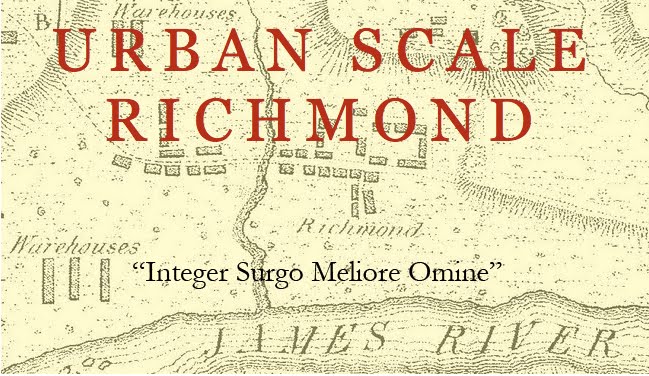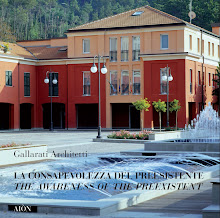 |
| The James River near Haxall Mills, 1865 |
“Let the most absent-minded
of men be plunged in his
deepest reveries--stand that
man on his
of men be plunged in his
deepest reveries--stand that
man on his
legs, set his feet a-going, and
he will infallibly lead you to
water, if water there be in all
that
region.”
Herman Melville, Moby Dick
“What would the world be, once bereft of wet and wildness?
Let them be left, O let them be left, wildness and wet;
Long live the weeds and the wilderness yet.”
G. M. Hopkins
Whenever Richmond’s citizens are gathered to assist in developing projects for civic improvement the
talk inevitably returns to the river. Richmond’s recent planning documents have emphasized
the many barriers that block easy access to the river. This lack of connections is usually placed among
the city’s most intractable problems. Under the sponsorship of the Capital Region Collaborative,
attendees at more than 100 public meetings indicated that enhanced visitation would improve the river
not only as a “recreational resource” and a “quality of life enhancement,” but as an “economic driver
for our region.” While planning documents invariably list it among a range of more troubling social
problems like inadequate education, substandard housing, and family instability, improved river
stewardship and access is the issue that captures the greatest share of public comment. It appears,
however, to Urbanismo that our search for domestic wilderness at the river’s edge coincides with a
failure of the city and a passive negation of the American urban experiment.
The most recent and authoritative document put forward is the city’s Richmond Riverfront Plan, which
has been labored over by citizen groups and organized by professional planners. The plan’s authors,
who see the river as threatened by development, place it “at the heart of the Richmond region” and
propose that it should become a “sustainable landscape corridor seamlessly connected with the River’s
significant resources upriver and downriver.”
They propose “placemaking” interventions at underused parcels, the addition of new trails,
improvement access to the water at existing parks, and the creation of more entry points for boating and
fishing. None of these activities are overly ambitious and some, like returning Mayo Island to its old
role as a recreational park, are to be loudly applauded.
Urbanismo spent much of our youths climbing across the rocks, playing in the falls, and even guiding
rafts down the James River as it passed through, or rather beside, the city, but we never fell to
thinking that there was insufficient access to it. More and safer access would have undercut our
fascination. Even before the creation of the perennially underfunded James River Park, we made our
way through broken and rusted fences, struggled through tall weeds and poison ivy, and tiptoed along
forbidden railroad tracks to reach the river’s bed and its waterswept rocky islands studded with
mysterious iron rings and hollowed by quarries. The risk to life and limb of directly encountering the
river is part of its attraction for young people. More than a few of them have actually drowned in the
unexpectedly swift water. The wildness of rivers is alien to the city, and it arrives perpetually from the
outside, shoving against the constraints of civilization.
The yearning for water and wildness imposed on the beach and the riverbank by bootless urbanites
seems misdirected to city dwellers. In the city, the river is restrained, sifted for its contents, and mined
for its energy-- including its current potential as an “economic driver.” They know its moods, because
the town and the river have always been bound together. Indeed, what great city is not on a mighty
river? Rivers bisect the cities of every region in the state. Although they remain untamed, the wildness
of city rivers can be deceptive- their every crevice has been explored and exploited in the name of
prosperity.
The city river is always framed by buildings, harbors, and equipment. Its edges make room inevitably
for strolling and gazing, but have always been irresistibly conditioned by the raw exchange of civic
order and primal power. The recent subsidence of industrial activity along its banks fosters the illusion
that we would be even happier if Richmond provided more “solid connections” to the river’s many
seasonal moods: we want to extend “the ability of people to get to, around and across the river on foot
and on bicycle, by car or public transportation” as Mayor Dwight Jones says. But what we have told
the planners is that the river is actually too wild, too dangerous, and too strong for us. The new plan
calls for safe, code-compliant access to a system of public interventions that would virtually line both
banks of the river-- our “great, wet Central Park”-- for most of its length through the city.
Not every intervention is so heavy-handed a part of the official planning process. The North Bank
Mountain Bike Trail along the river bluff below Hollywood Cemetery contrasts with the kinds of
“placemaking” typical of most park systems. The trail, created and maintained with minimal
infrastructure by cyclists, is kept as clean and clear as an animal path. It retains the subtle sense of
adventure that gives zest to urban exploration. On the public side, however, walking to the parkland at
Texas Beach seems “wild” in a more unsavory way. Crossing the rusted steel bridge and decaying stair
tower is like traversing a disused New York Subway tunnel accompanied by unpleasant sights and
smells, only to reach a waterlogged and often unusable path to the river. The decaying industrial ruins
along other sections of the river seem of a piece with the park’s access structures and support buildings.
City dwellers will realize that Richmond’s problems do not stem at all from lack of access to the river.
We already drink from it, drive over it, and keep its powerful image in our imaginations, where
rivers and other similarly potent forces of nature do their most effective work. In fact, the heart of the
city is most certainly not the James River: real wilderness has only a small place in the city’s necessary
order. Our life as citizens- practicing politics- the great art of living together- is at the heart of the city.
Neglecting our urban life and its finely crafted architectural setting, we have somehow abandoned a
shared understanding of what it takes to build and maintain a good city. Our sidewalks have been
depopulated, the prosperity that serves the civic good has fled, and our schools are unable to fully
reform themselves. Richmond’s fragile connective tissues should be of more immediate interest
than the waters of the beautiful, unstoppable river.










No comments:
Post a Comment